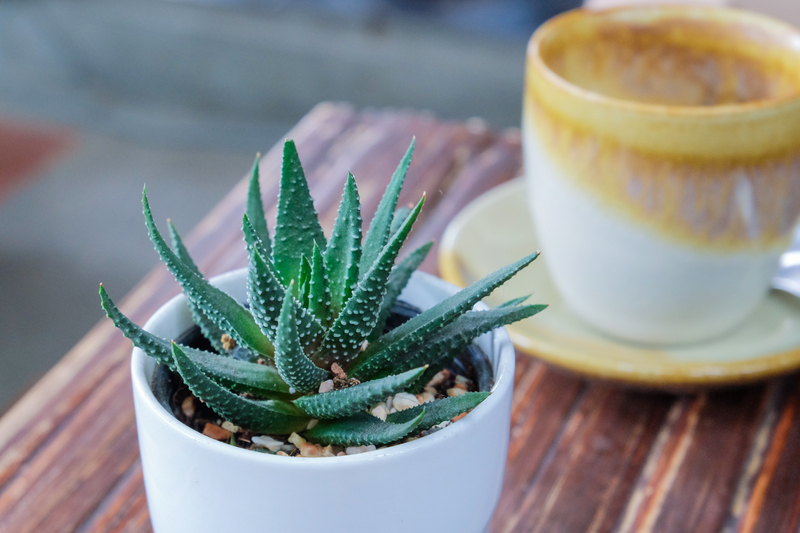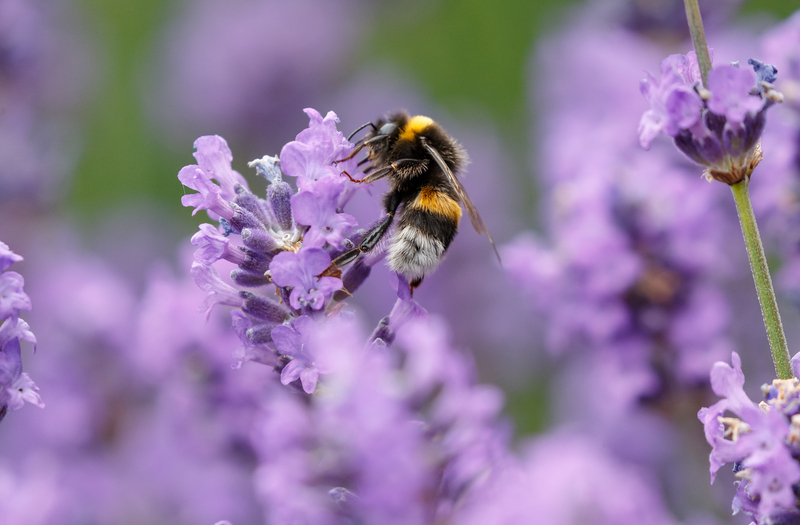Winter-Proof Your Garden: Keep Plants Safe in Cold Months
Posted on 16/09/2025
Winter-Proof Your Garden: Keep Plants Safe in Cold Months
Winter can be a challenging season for gardeners and plant enthusiasts. The cold weather, chilly winds, and frost pose threats to even the hardiest of plants. Fortunately, with the right knowledge and preparation, you can ensure that your garden remains healthy and vibrant throughout the cold months. In this comprehensive guide, we'll explore effective strategies to winter-proof your garden and share practical tips for keeping your plants safe during winter.
Understanding the Challenges of Winter for Gardens
Before diving into protective measures, it's important to understand how winter affects plants. Cold temperatures, frost, snow, and ice can cause a variety of issues such as:
- Frost damage to leaves, stems, and roots
- Dehydration due to frozen soil
- Root rot from poor drainage or excessive moisture
- Broken branches or stems caused by heavy snow or wind
- Reduced growth rates due to limited sunlight
A little preparation can go a long way in minimizing these winter hazards for your plants and ensuring their survival until spring.

1. Assess Your Garden and Identify Vulnerable Plants
Start your winterizing process by walking through your garden and identifying which plants need protection. Some species are naturally hardy and can withstand extreme cold, while others may be sensitive to frost and freezing temperatures. Common vulnerable plants include:
- Young trees and seedlings
- Evergreen shrubs
- Tropical or subtropical plants
- Container plants
- Newly planted perennials
Certain winter-proofing methods may be necessary for plants in exposed areas or microclimates with harsher winter conditions. Take notes on which species may need extra protection.
Check Plant Hardiness Zones
Your location's USDA Hardiness Zone determines which plants can survive your winters. Verify that your garden plants are suitable for your zone, and prioritize protecting those at the edge of their range.
2. Prepare Your Garden Soil for Winter
Healthy soil is the foundation for winter plant survival. Preparing your soil before the first frost helps insulate roots and improves drainage--two factors essential for winter plant protection.
Mulch Generously
- Spread a thick layer (3-4 inches) of organic mulch around the base of trees, shrubs, and perennials.
- Pine needles, shredded leaves, straw, or bark chips all work well to insulate roots and regulate soil temperature.
- Don't pile mulch directly against stems or trunks to avoid rot.
Improve Soil Drainage
- Add compost or well-rotted manure to increase soil structure and fertility.
- Break up compacted soil to prevent waterlogging, which can lead to root rot during freeze-thaw cycles.
3. Water Wisely Before the Deep Freeze
Many gardeners mistakenly believe plants don't need water in winter. However, soil should be adequately moist before a freeze. Moist soil holds more heat than dry soil, providing better insulation for roots. Here's how to water efficiently:
- Give your garden a deep watering just before the ground freezes.
- Avoid over-watering, as soggy soil promotes fungal diseases.
- Water early in the day, so plants have time to dry before temperatures drop at night.
Never let containers or raised beds dry out completely in winter; check them regularly for moisture.
4. Protect Delicate Plants with Covers and Structures
When temperatures plummet or frost threatens your plants, using protective covers can make all the difference. Here are the best ways to shelter your sensitive plants:
Frost Cloths and Row Covers
- Lightweight fabrics, such as horticultural fleece, allow in sunlight while trapping heat.
- Drape covers loosely over shrubs or use stakes to support them above the leaves.
- Remove covers during sunny days to prevent overheating and encourage air flow.
Cold Frames and Cloches
- Cold frames are simple structures with a transparent lid, creating a mini-greenhouse effect.
- Cloches (bell-shaped covers) can be made from glass, plastic, or even recycled plastic bottles.
- Ideal for protecting individual young plants or delicate vegetables.
Mulch and Leaf Piles for Insulation
- Covering smaller plants with extra mulch or leaves helps trap warmth and insulate stems.
- Remove the mulch or leaf pile gradually in early spring.
5. Move and Care for Container Plants
Container gardens are at greater risk in winter because pots are exposed to the cold from all sides. Roots in pots can freeze much faster than those in the ground. To winter-proof your potted plants:
- Bring tender container plants indoors, to a garage or basement where temperatures remain above freezing.
- For hardy pots that stay outside, cluster them together and place against a south-facing wall for warmth.
- Wrap pots with bubble wrap, burlap, or blankets to provide extra insulation.
- Elevate pots off the ground with bricks or pot feet to prevent waterlogging and reduce frost exposure.
Monitor indoor plants for signs of overwatering or lack of humidity, especially if your house is dry during winter.
6. Prune Wisely (But Not Too Early!)
Smart pruning can help winterize your garden and reduce the risk of breakage from snow and ice. However, timing is important:
- Remove dead or diseased branches in late fall to prevent spread of pathogens.
- Avoid heavy pruning just before winter, as it can stimulate tender new growth that won't survive the cold.
- Shape evergreens to minimize snow accumulation, which can cause branches to split.
7. Shield Trees and Shrubs from Winter Sun and Wind
Winter wind and sun can be just as damaging as freezing temperatures, especially for evergreens and young trees. Here's how to reduce winter stress:
Use Windbreaks
- Install burlap screens or snow fences on the windward side of your garden.
- Plant permanent windbreaks like dense hedges or rows of evergreen trees in long-term planning.
Whitewash Tree Trunks
- Apply a solution of diluted white latex paint to the south and west sides of young tree trunks to prevent sunscald (cracking of bark caused by intense winter sun).
8. Manage Snow and Ice Carefully
Snow can both help and harm your winter garden. It insulates plants and keeps them dormant, but heavy accumulation can break branches. Here's how to handle it:
- Gently brush snow off shrubs and small trees after heavy storms; avoid shaking frozen branches, which may cause them to snap.
- Shovel snow away from garden beds or container plants to prevent crushing.
- Never use salt-based de-icers near plants; opt for sand or sawdust for walkways instead.
9. Keep Wildlife in Mind
During winter, hungry animals may feed on bark, twigs, and roots, especially when other food is scarce. Protect your plants from wildlife by:
- Wrapping trunks of young trees with hardware cloth or spiral tree guards to deter rodents and deer.
- Fencing off vegetable beds or prized shrubs.
- Applying animal repellents or using natural deterrents like hot pepper spray where appropriate.
10. Create a Winter Garden Care Calendar
A little planning goes a long way to ensure your winter garden protection strategy is effective. Set monthly or weekly reminders for tasks such as:
- Inspecting plant covers and structures after storms
- Checking soil moisture, especially around containers and new plants
- Removing snow build-up from vulnerable shrubs
- Monitoring for signs of disease or pest activity
Bonus Tips for a Beautiful Winter-Proof Garden
- Choose winter-interest plants like red-twig dogwood, winterberry, or hellebores to add color during cold months.
- Use evergreens and ornamental grasses to provide structure and greenery year-round.
- Incorporate garden art, bird feeders, or sculptures for visual appeal even when plants are dormant.

Frequently Asked Questions About Winter Plant Protection
Q1: When should I start preparing my garden for winter?
Begin your winter-proofing routine in late autumn, a few weeks before the first hard frost is expected. This gives you time to mulch, move plants, and set up covers without being rushed.
Q2: Can I use plastic covers to protect my plants from frost?
Yes, but with caution. Plastic traps moisture and heat, but must not touch the foliage. Always prop plastic with stakes and remove it when the sun is out to prevent overheating.
Q3: Will all my plants survive winter if I follow these tips?
While these strategies greatly improve your odds, extreme weather can still cause losses. Focus on protecting your most valuable or vulnerable plants for best results.
Q4: Should I fertilize my garden in winter?
It's generally best to avoid fertilizing in winter, as most plants are dormant and cannot use the extra nutrients. Apply fertilizer in early spring when growth resumes.
Conclusion: Invest in Your Garden's Winter Survival
Winter doesn't have to spell doom for your treasured plants. With careful planning and these expert tips, you can winter-proof your garden and enjoy a lush, thriving landscape come spring. Remember to assess your garden, mulch wisely, protect sensitive plants, and monitor throughout the season. A little effort now ensures your garden not only survives, but thrives--even in the coldest months!
Ready to safeguard your green space? Start preparing today and experience the rewards of a winter-tough, resilient garden.

